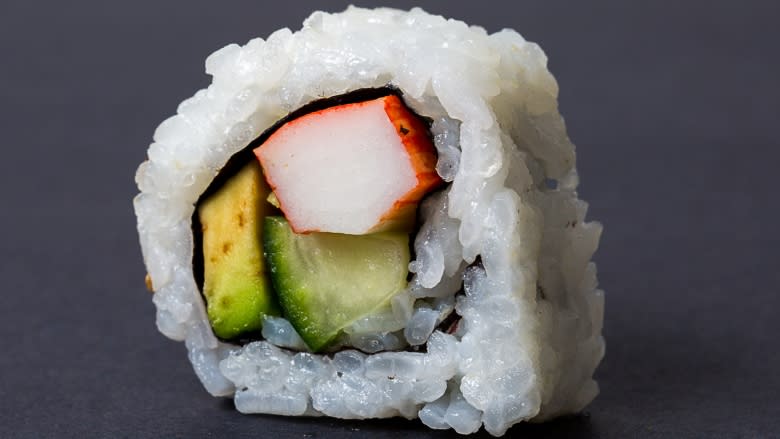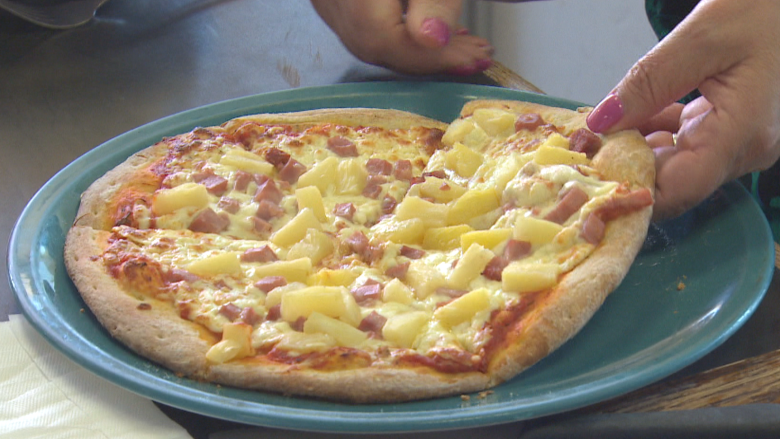How the California roll, Hawaiian pizza and the Bloody Caesar were invented in Canada
When it comes to notable foods, Canada can lay claim to more than just poutine, Nanaimo bars and those sugar-coated BeaverTails.
Thanks to our diverse culture, this country is also the birthplace of some other famous fare that may surprise you.
The California roll
When Hidekazu Tojo emigrated from Japan to Vancouver in 1971, sushi was not on the menu. The 67-year-old chef says that most people didn't eat raw fish and thought seaweed belonged in the ocean.
"'Oh, seaweed, eww, yuck.' People said that," recalls Tojo.
Determined to make sushi appealing to the locals, the chef opted for more palatable fillers, such as cooked crabmeat and avocado. To conceal the offending dried seaweed, he rolled the sushi so the rice was on the outside.
"We called it the inside-out roll," says Tojo. "This was breaking Japanese tradition."
The year was 1974.
Tojo's creation became a huge hit and was eventually dubbed the "California roll." He's unsure how his creation got its official name, suspecting it has something to do with the fact avocados grow in California.
Today, the California roll is a standard menu item at sushi restaurants around the world. It typically contains avocado, crab or imitation crab, and cucumber.
Tojo is still working as a chef and now owns his own restaurant, Tojo's, in downtown Vancouver.
He's bittersweet about the popularity of his inside-out creation; he's glad people are embracing Japanese food — but uneasy with the fact that everyone copied his invention.
"Great chefs never copy, I believe that," says Tojo. "But today, everybody copies. No respect."
And while the California roll is now a household name, Tojo's is decidedly less so. "They don't know who did it. That's a shame," he says.
Hawaiian pizza
When Sam Panopoulos emigrated from Greece to Canada in 1954, pizza was an oddity. "Pizza wasn't in Canada — nowhere," he told CBC Radio's As It Happens in February.
At the time, the food was available in Detroit and was slowly making its way to neighbouring Windsor, Ont., not far from Chatham, Ont., the small town where Panopoulos had settled and opened a restaurant.
When visiting Windsor, he dined on pizza and decided to try making it at home. "Those days, the main thing was mushrooms, bacon and pepperoni. There was nothing else going on the pizza," said Panopoulos.
Inspired by a can of pineapple on his shelf, he took a chance and tossed the fruit on his pizza. The year was 1962.
"Nobody liked it at first," said Panopoulos. "Those days nobody was mixing sweets and sours and all that. It was plain, plain food."
But eventually the pineapple-topped pizza took off and his restaurant customers "went crazy" for the food. "Everybody wants it," he said.
Today, his creation, known as Hawaiian pizza, is served at pizza restaurants around the world. Yet Panopoulos — who died last month at the age of 82 — always remained humble about his invention.
"He was very modest about it," says his son, Bill Panopoulos, who lives in London, Ont. "He enjoyed telling the story if you would ask him, but he wasn't seeking fame."
After his death, media outlets around the world, from the BBC to gossip site TMZ, noted the passing of the inventor of Hawaiian pizza.
The Bloody Caesar
The Bloody Caesar cocktail is so popular, it may surprise some Canadians that it was invented here — yet is actually not well-known outside the country.
It all began in 1969, when Italian immigrant Walter Chell was working as a beverage manager at the Westin Hotel in Calgary. He decided to mix up a new drink for the hotel's new restaurant.
Chell combined tomato juice, clam juice, Worcestershire sauce, spices and vodka, the story goes. He named the concoction simply "Caesar."
But that bloody part? He offered the drink to a British guest sitting at the bar.
"The British gentleman said, 'This is a bloody good Caesar,' and that's how the Bloody Caesar came to be," says Chell's granddaughter, Sheena Parker.
The cocktail became such a hit that the U.S.-based company Mott's bought Chell's recipe, says Parker. The company also signed him on as a spokesperson for its product: Mott's Clamato — a clam and tomato juice drink that can be used to make a Caesar.
"He was the poster child for the [Clamato] drink for a number of years," says Parker.
Chell died in 1997 at age 71.
Today, the Bloody Caesar is served at most Canadian bars. According to the Mott's Clamato website, Parliament declared the Caesar Canada's official cocktail in 2009.
While Chell wasn't alive to witness it, Parker says he never would have expected such a designation for his drink.
"He would always say he preferred a nice glass of red wine over a Bloody Caesar," she says. "He was a humble man and not one to self-promote any achievements."
But she does think it's fitting to remember innovators like Chell for Canada's 150th birthday.
"When you think of Canada, you think of everybody that's come from somewhere to create their mark and create a better life," says Parker. "He certainly did that and it was just nice that he was able to leave a little bit a legacy for others to enjoy."



